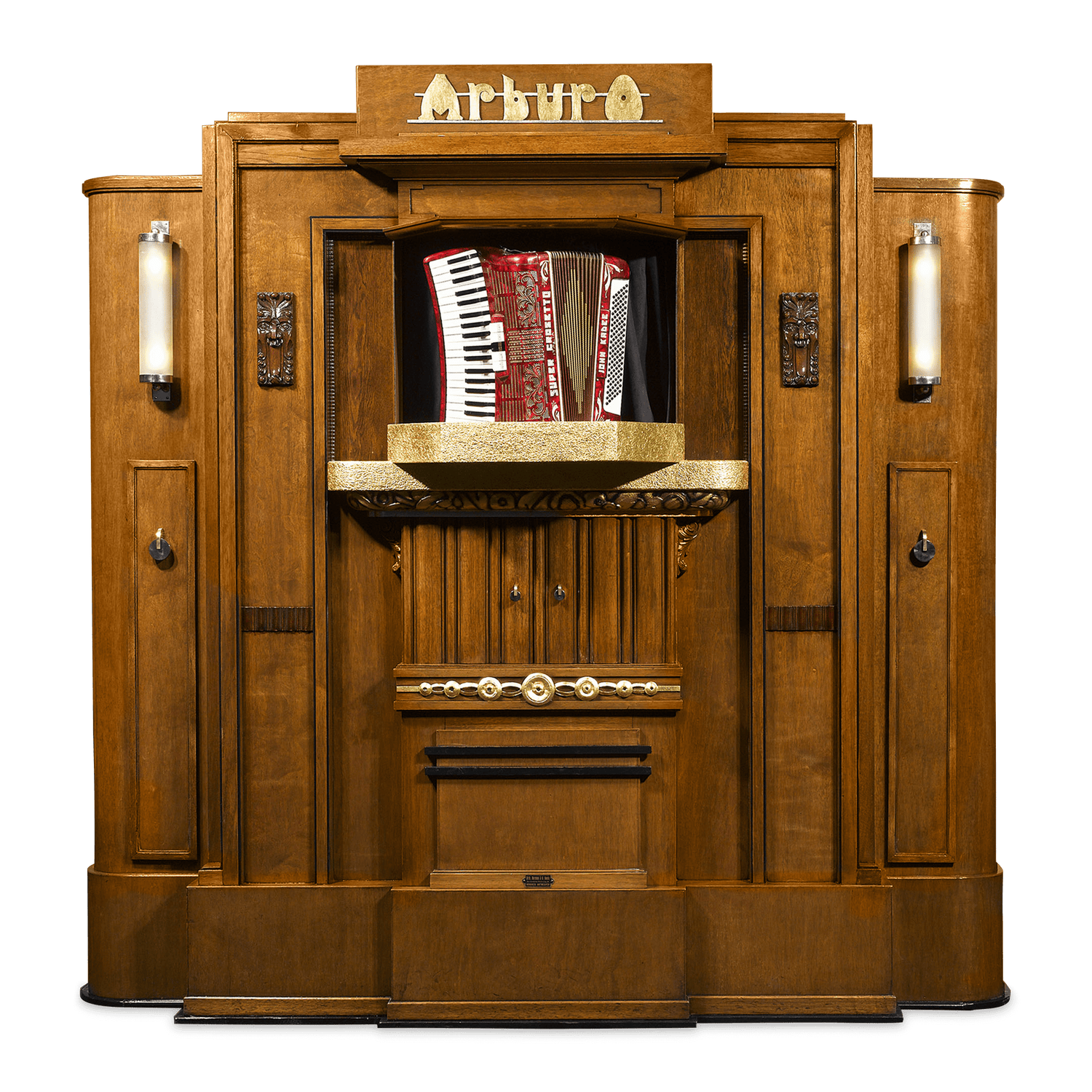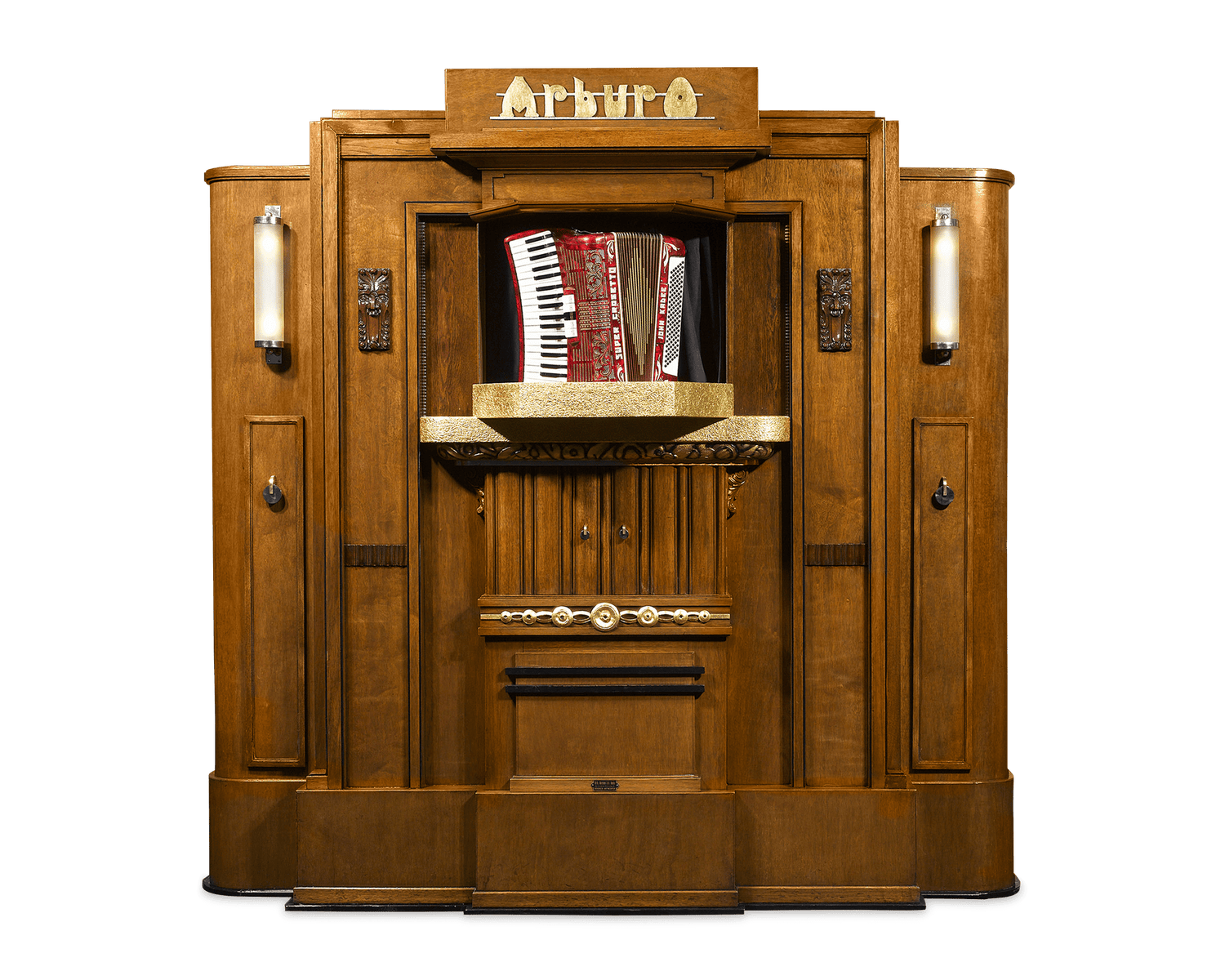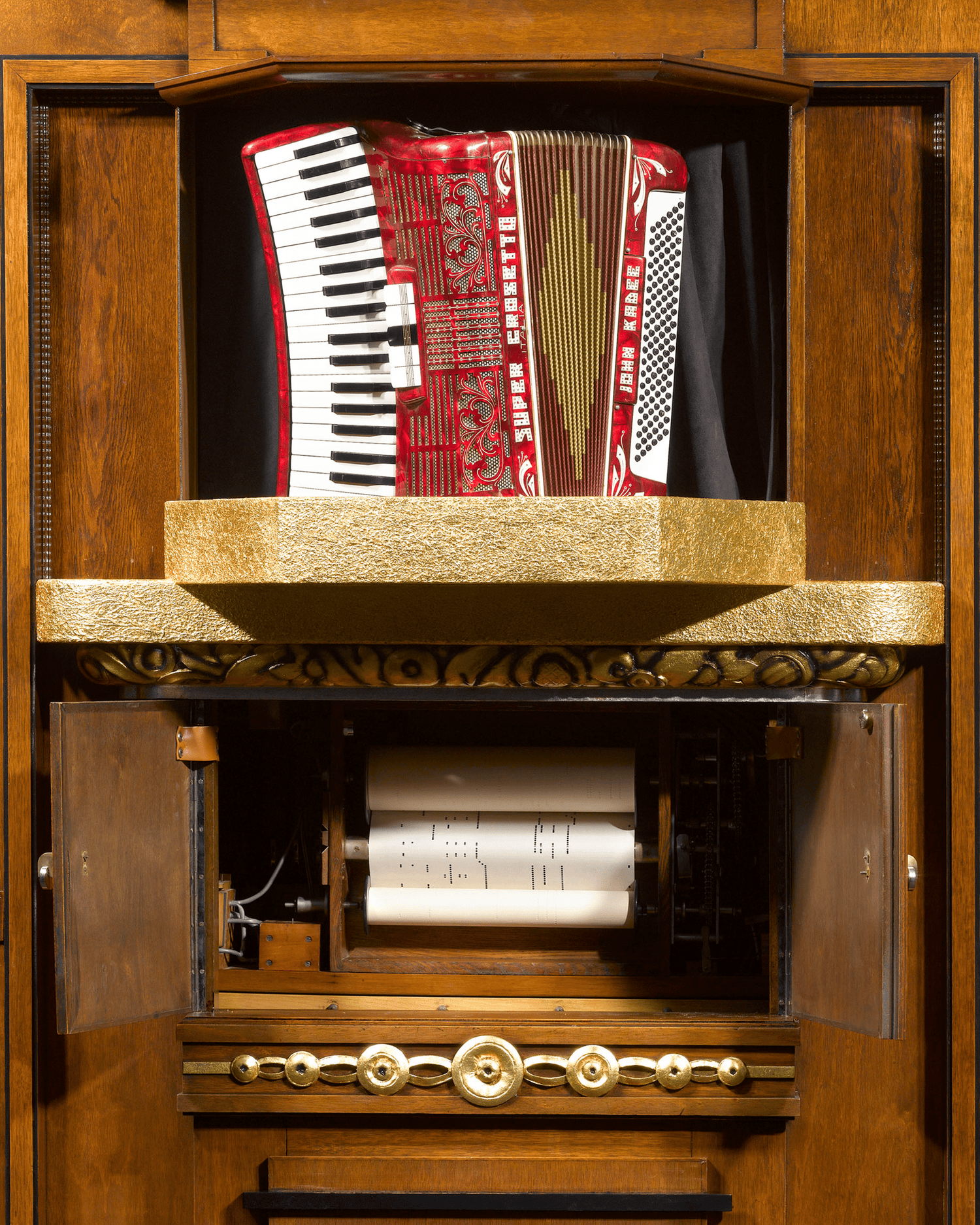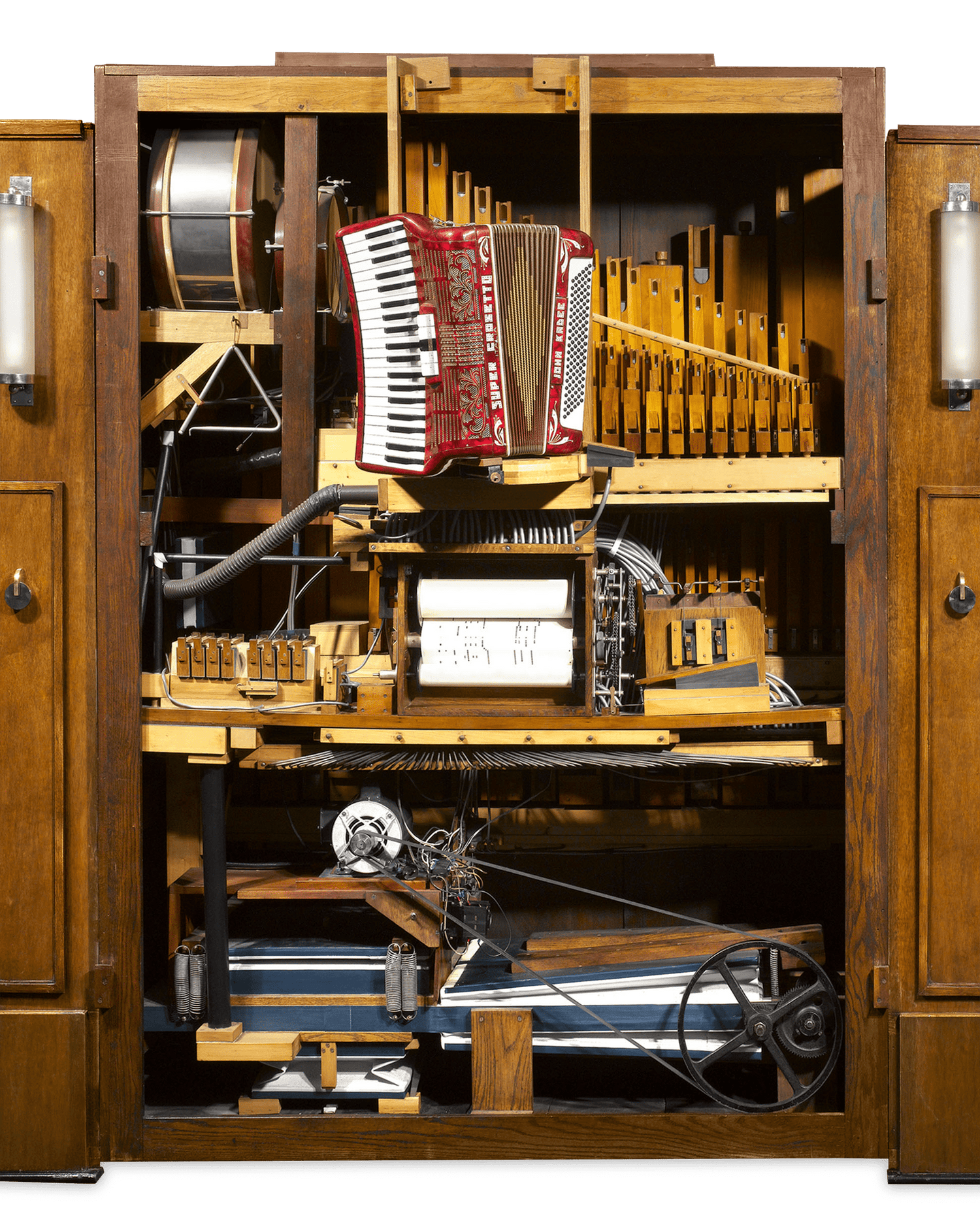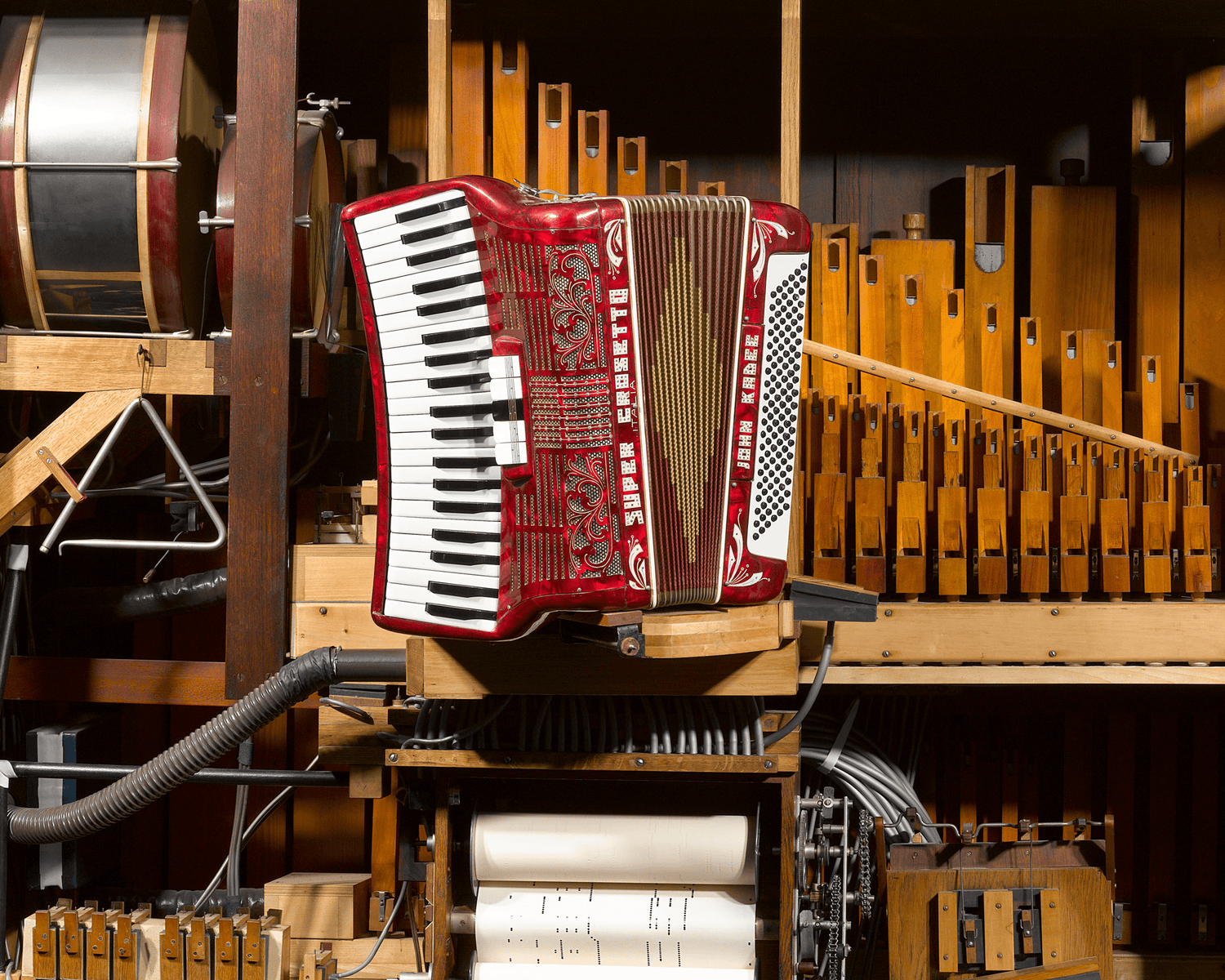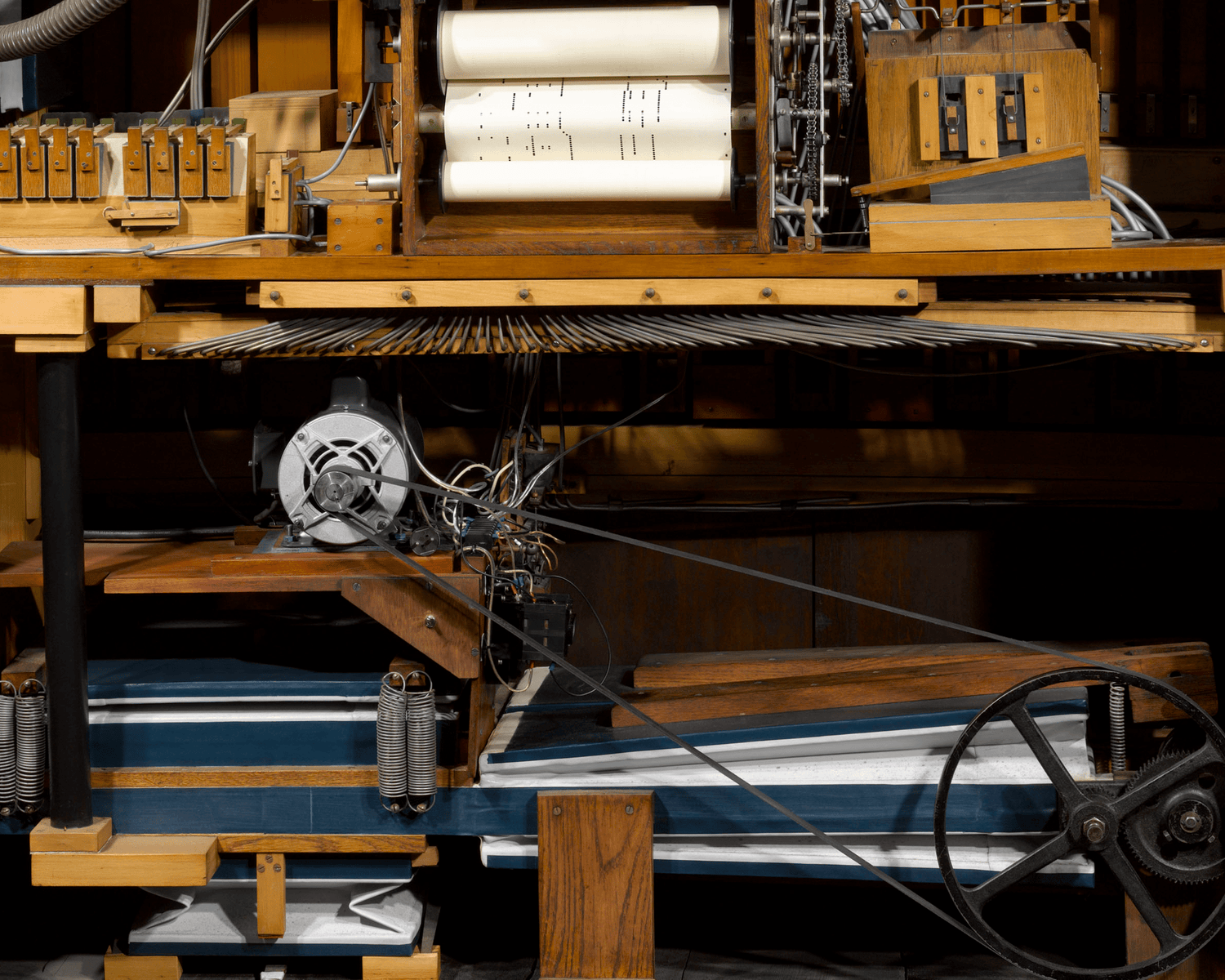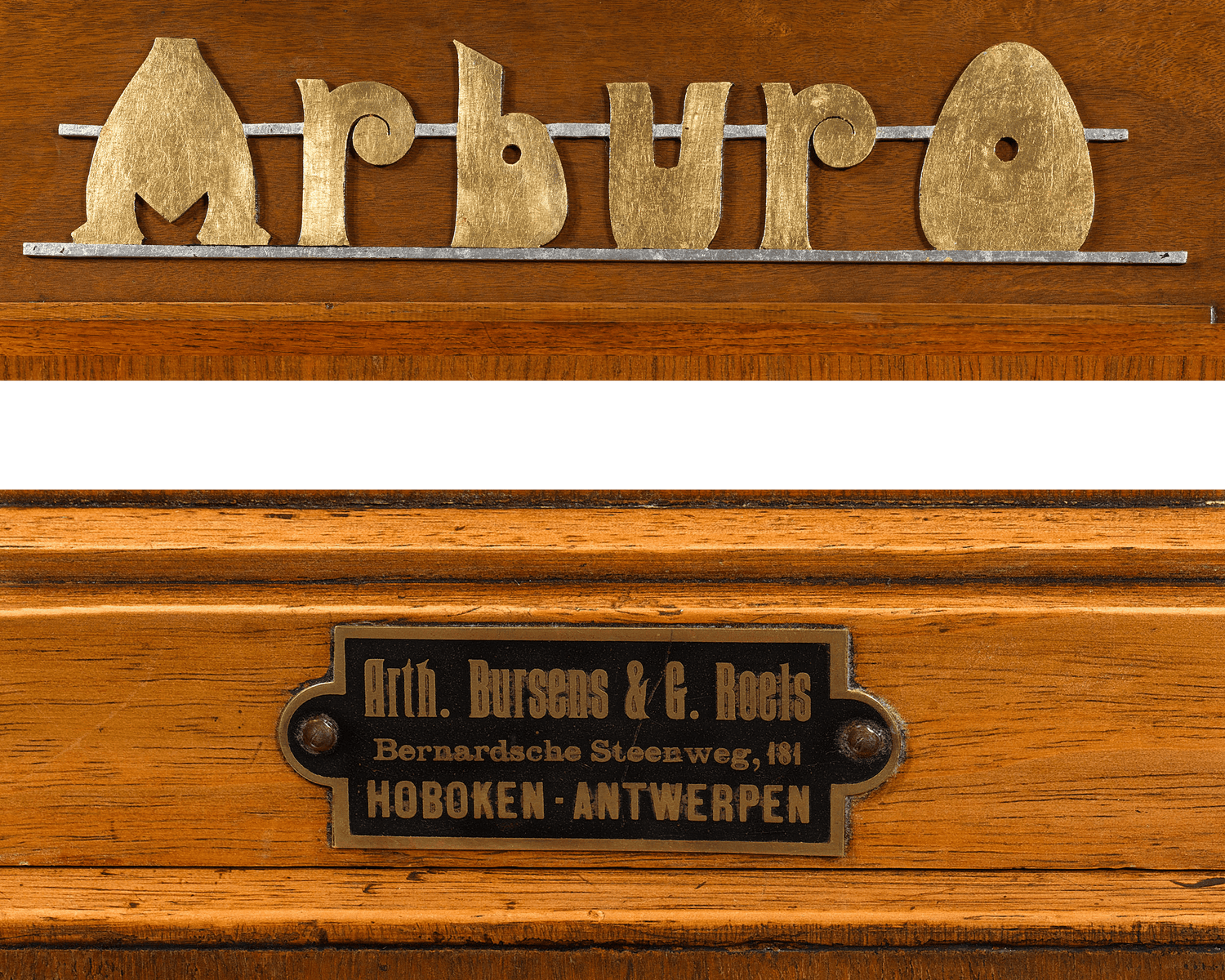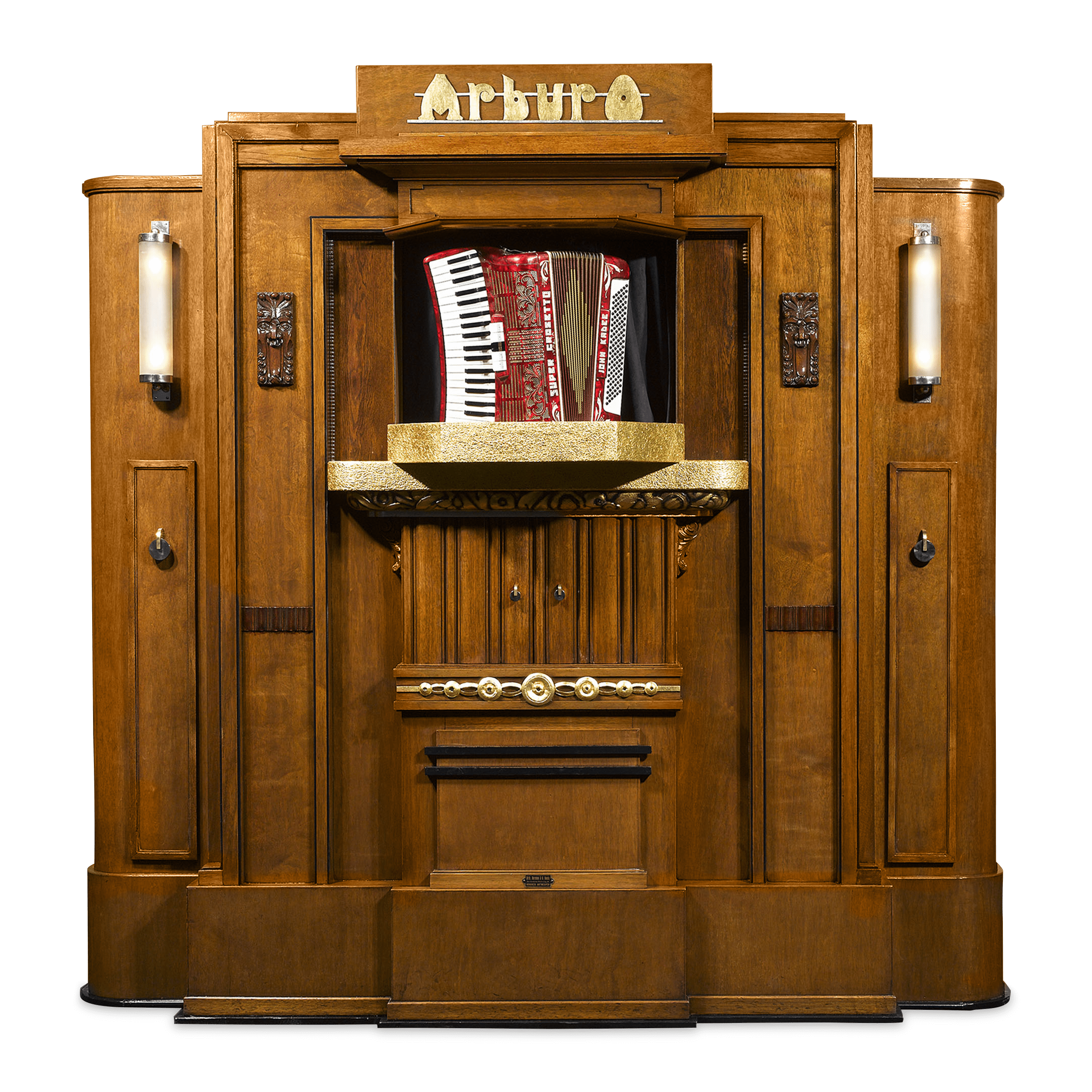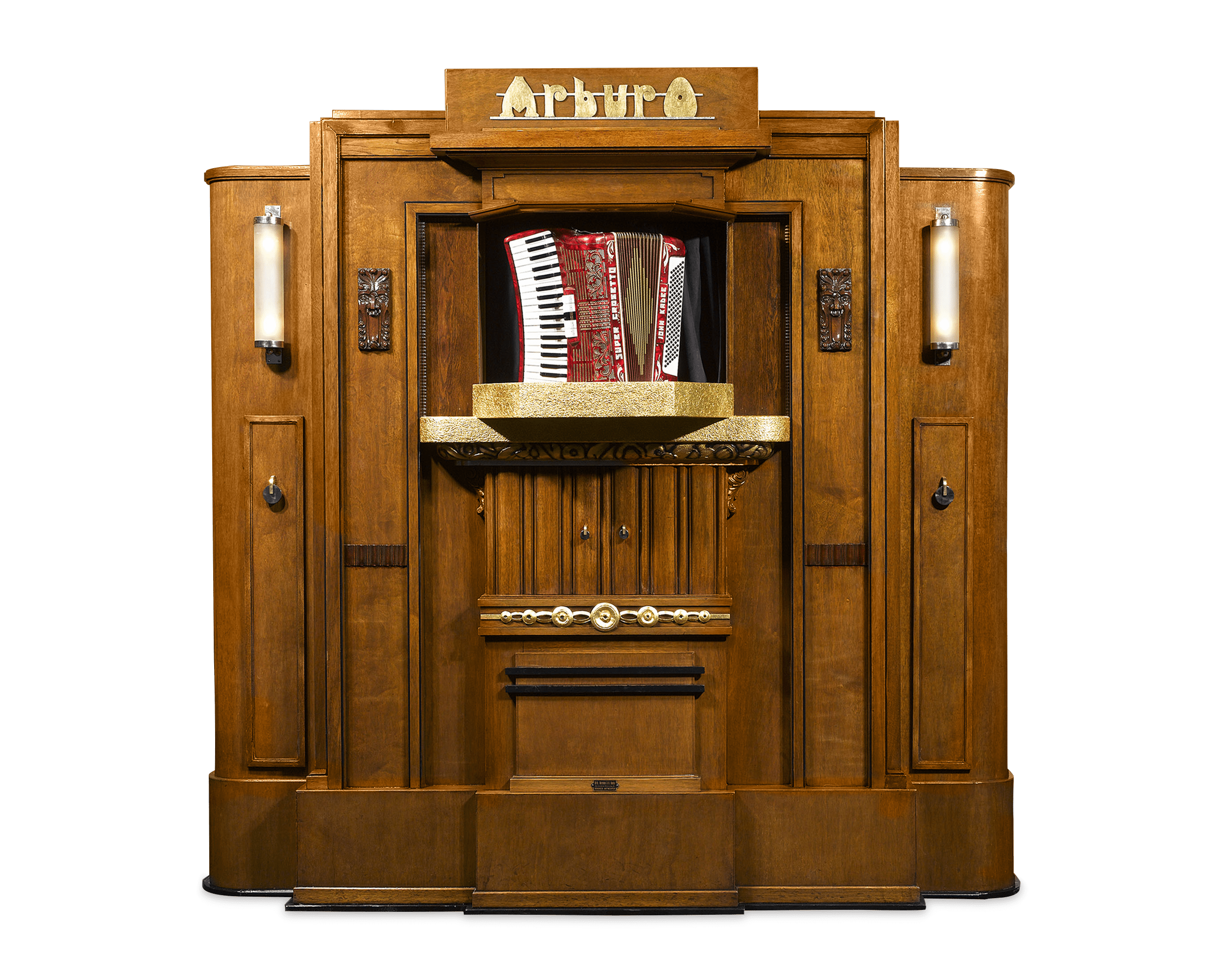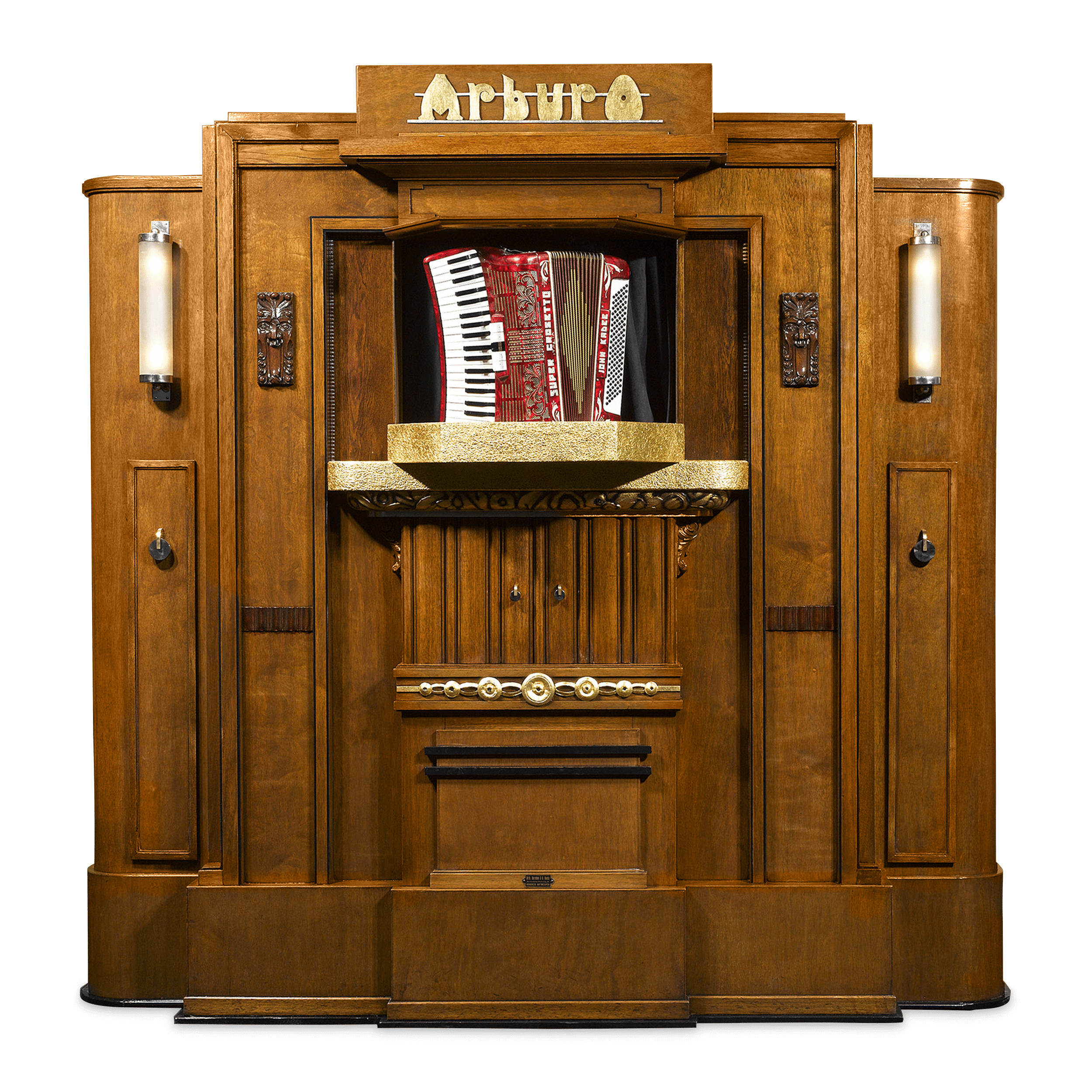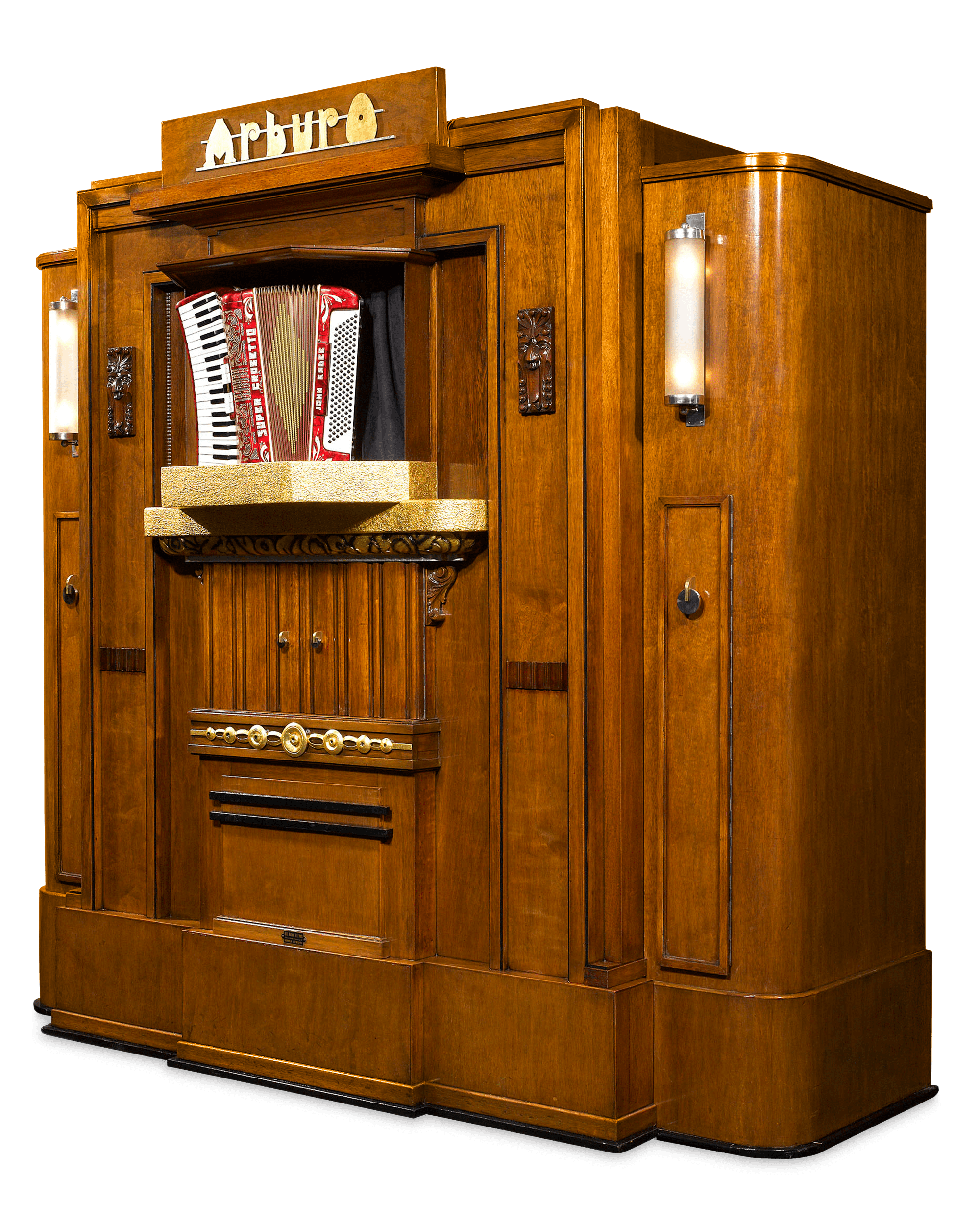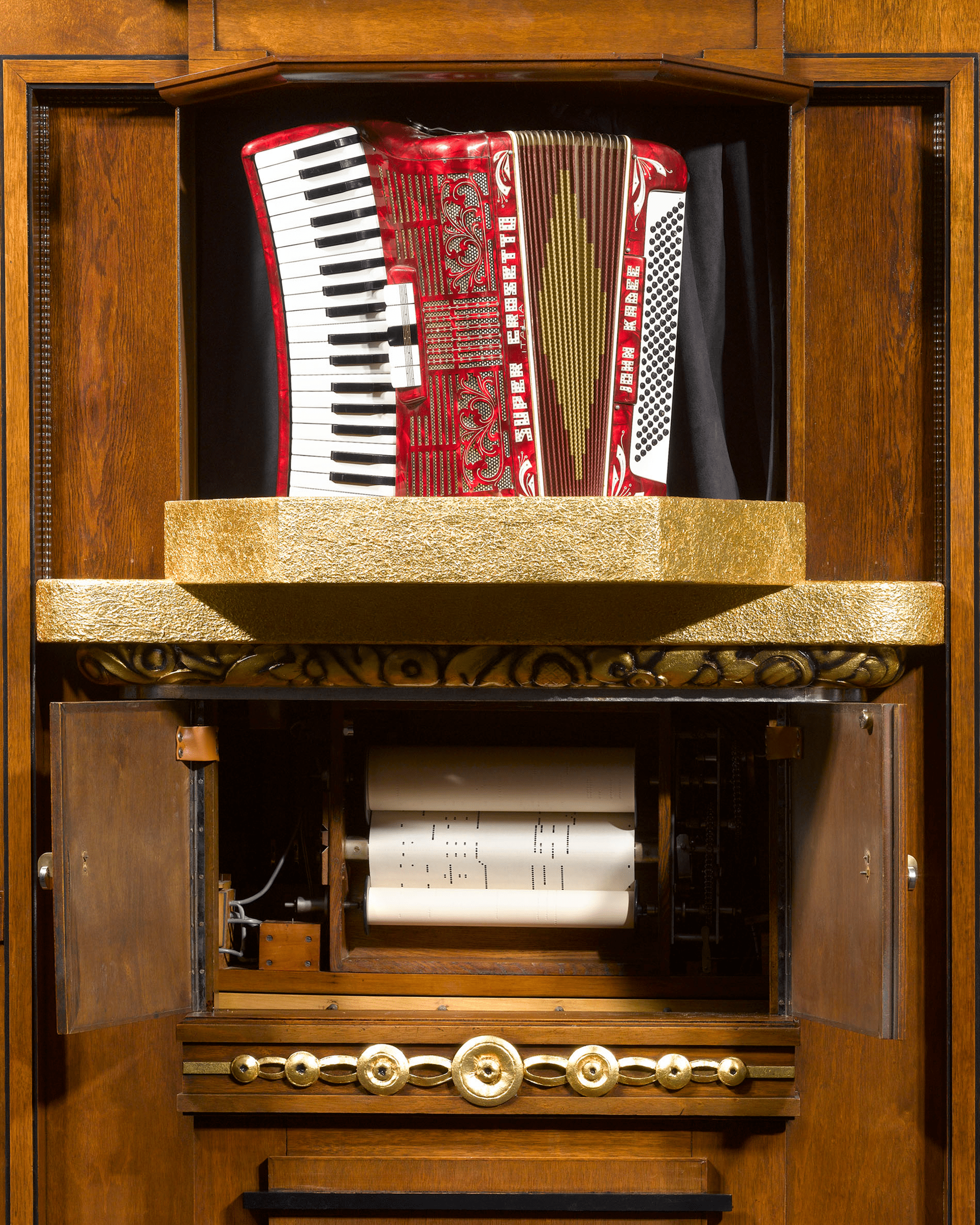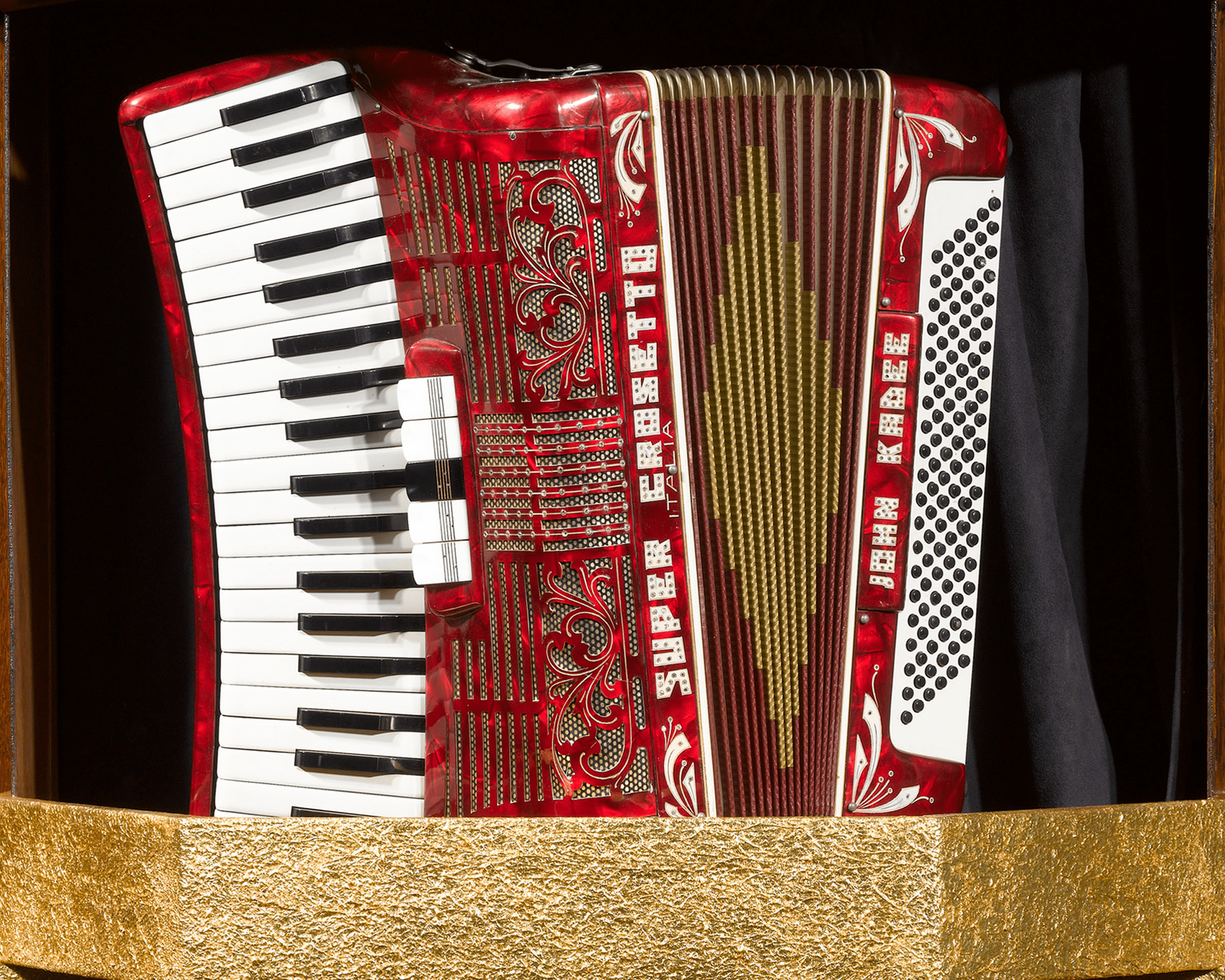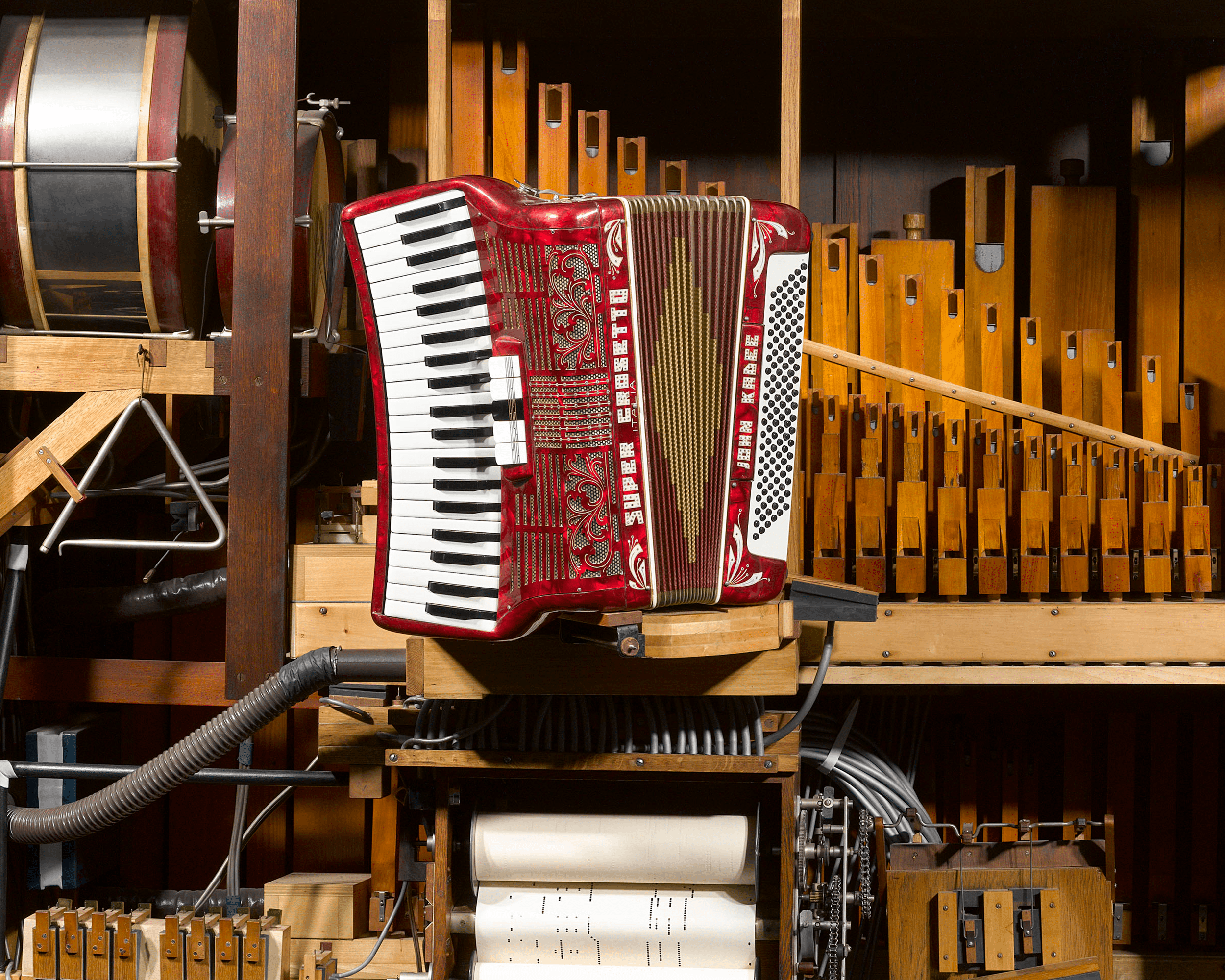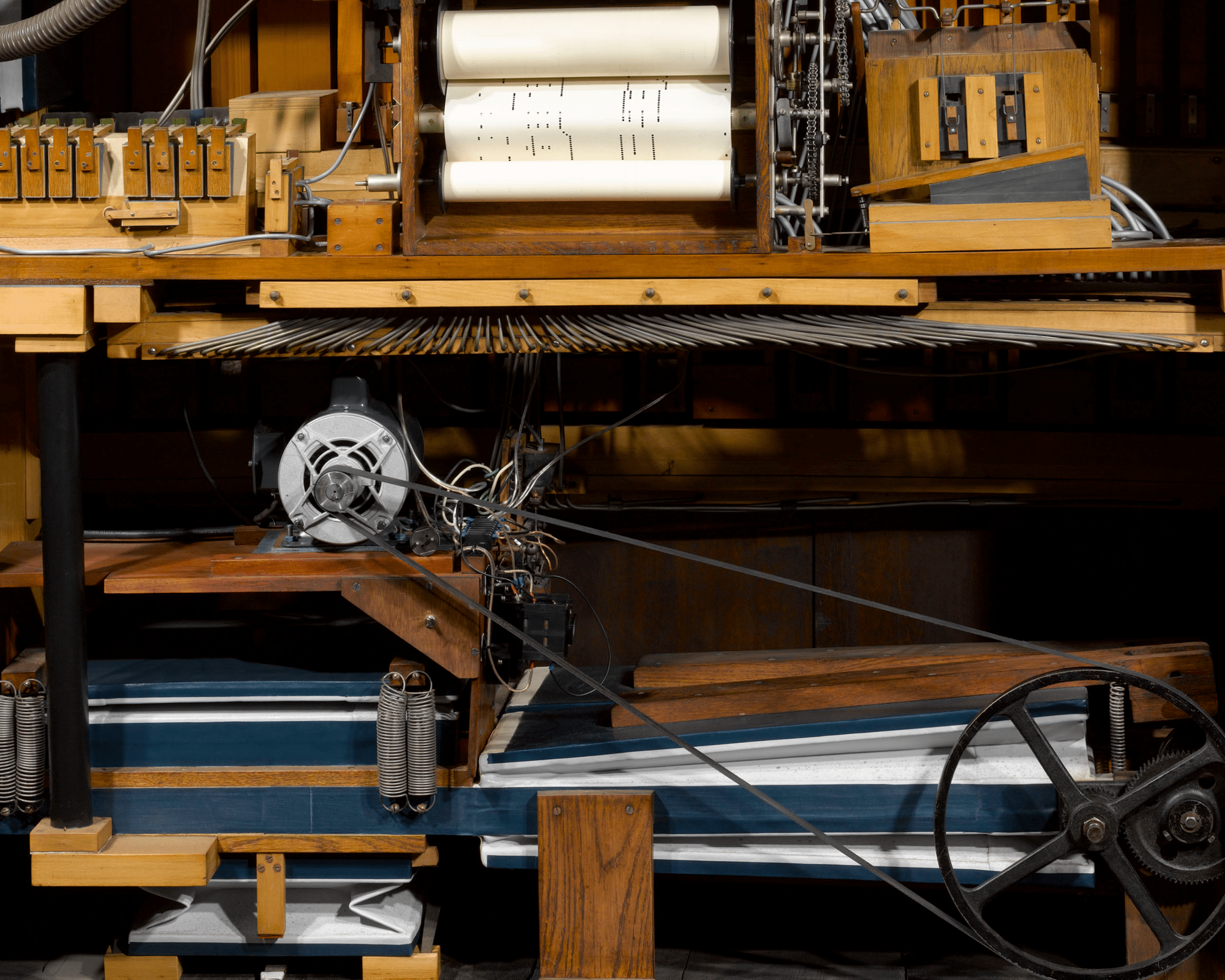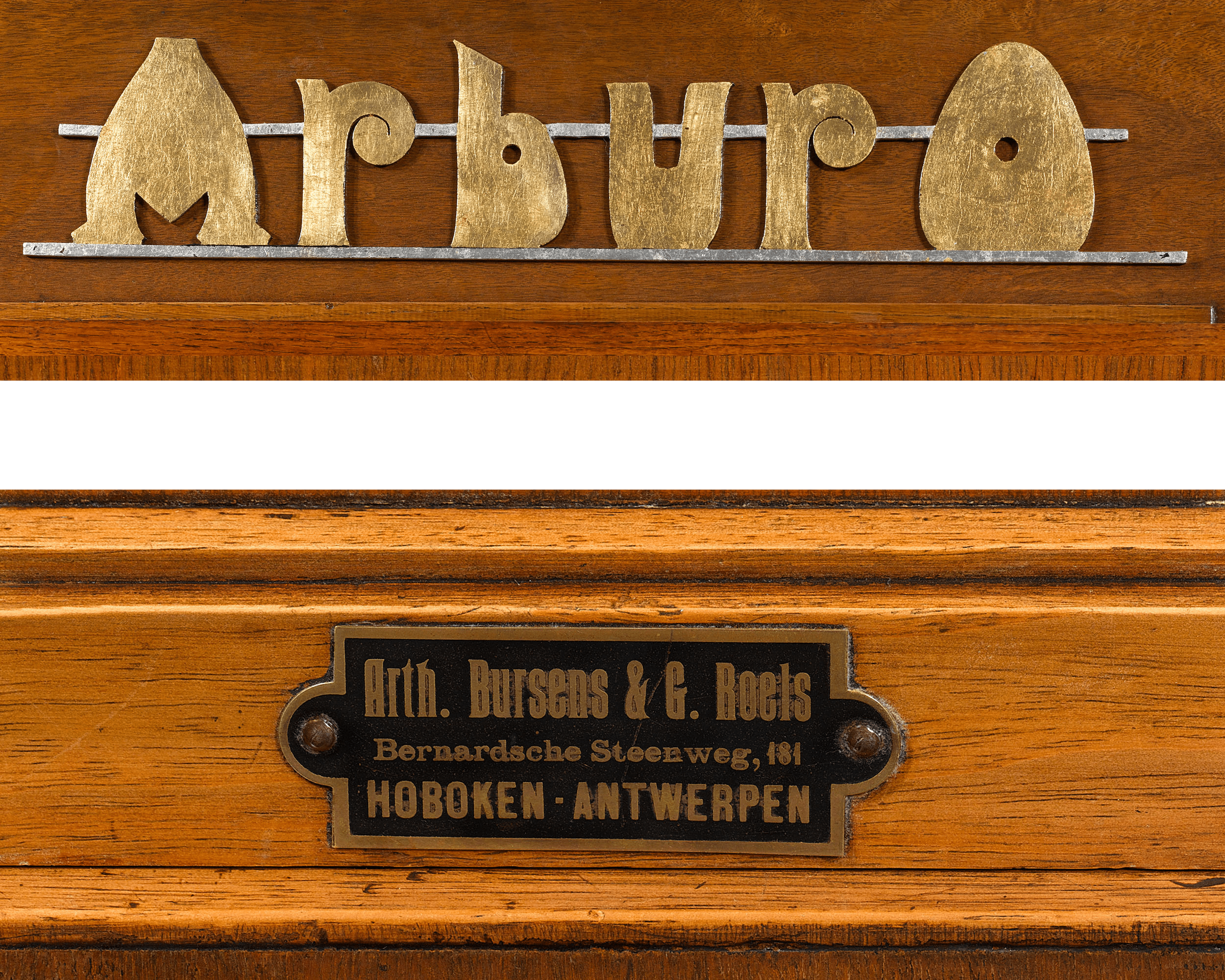M.S. Rau is committed to offering fine art of the highest caliber and we seek paintings and sculpture by historically renowned artists, often with impressive provenance. The large majority of our works of art come from private. . .
At M.S. Rau, we are committed to building a long-term, rewarding relationship with each and every client. That’s why your purchase is backed by our 125% guarantee.
Learn MoreArburo Orchestrion Organ by Bursens and Roels
- A rare and early Arburo Orchestrion dance hall organ of exceptional quality and working condition
- Standalone instruments, including drums, triangle and an accordion, are integrated in the mechanism
- Each Orchestrion was made to order, one at a time, and entirely by hand at the Arburo manufactory
- This Art Deco period Orchestrion dates to the very first years of Arburo operations, circa 1928-29
- Get complete item description here
To speak to one of our experts, call 1-888-711-8084
The organ operates on electricity and its sound quality is breathtaking. Instruments including a visible accordion, 168-pipe organ, triangle and drums are all controlled by one of 20 rolls included with this Orcestrion. A powerful motor provides high air pressure to operate the pipes and the vacuum, which reads the roll and controls the percussion. This allows the organ to generate the volume necessary to overcome the noise of revelers in a crowded dance hall. Today, very few examples of these musical marvels exist, especially in the exceptional working condition of this example. Such splendid musical antiques generate tremendous attention on the market, making this organ a prized acquisition for musical enthusiasts world-wide.
Founder Joseph Bursens began his career working with his father at the Mortier organ manufactory in Antwerp. He began creating his own organs in his spare time, and eventually opened his own manufactory in Hoboken in 1908. Bursens quickly became known for his impeccably crafted dance hall organs, each a masterpiece of hand-craftsmanship inside and out. In 1928, Brusens' son, Arthur, took over the business and decided to take on a partner, Gustav Roels, renaming the company ARBURO (ARthur BURsens and ROels). Just like his father before him, Arthur learned the importance of quality, and continued to make each and every organ by hand. The reinvigorated company began creating their prized Orchestrions using the more functional paper roll instead of the accordion books of earlier models. This freed space within the mechanism for incorporating more musical instruments and mechanisms, while also allowing each Orchestrion to play more tunes without interruption.
The Orchestrion was created from the 1930s through the 1960s. However, this particular example dates to Bursens and Roels very first years of Arburo production. Arburo had moved their operations to the address Bernardsche Steenweg 635 in 1930: a larger locale that allowed them to meet their high demand. The trademark plaque affixed to the Orchestrion includes Bursens previous address "Bernardsche Steenweg, 181," meaning this Orchestrion was created between 1928 and 1929. Further confirming this date is the fact that the music roll is located at the center of the mechanism, while the rolls in later Arburo creations were positioned either to the left or the right.
This Arburo Orchestrion was showcased at the Arburo centennial exhibition Bursens Organs at Hoboken on October 4-19, 2008 at the Castle Sorghvliet of Hoboken, Belgium.
Circa 1928-29
105 1/2" wide x 50 1/4" deep x 102 1/2" high

| Maker: | Arburo |
| Period: | 20th Century |
| Type: | Automatons/Orchestrions |
| Depth: | 50.25 in. (127.64 cm) |
| Width: | 105.5 in. (267.97 cm) |
| Height: | 102.5 in. (260.35 cm) |
At M.S. Rau, we are committed to building a long-term, rewarding relationship with each and every client. That’s why your purchase is backed by our 125% guarantee.
Learn More